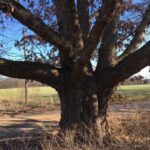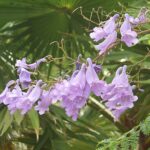I typed the heading above this afternoon. But, it’s been 10 days since I wrote most of what follows, except for the photo credits and the update at the end. . . .
So, I’ve gone from 13 trees to 3 others, from an almost-decision of Catalpa and Ginkgo to a consideration of the Swamp White Oak, the Tulip-Tree, and the American Basswood.
The Swamp White Oak (Quercus bicolor)
A member of the Beech family–as are all varieties of oaks I was surprised to learn–the Swamp White Oak appeals to me because a particularly magnificent specimen of this species led to the city I live in being named Royal Oak. (And, yes, if I pick this tree, I’ll finally share the story as I’ve heard it.)

Photo Credit: T. Davis Snydor, Ph.D., Ohio State University
(http://shade-trees.tripod.com/families/)

Photo credit: https://www.nativnurseries.com/products/swamp-white-oak-seedlings-for-sale-quercus-bicolor
The Tulip-Tree (Liriodendron tulipifera)
A member of the Magnolia family, the Tulip-tree caught my attention because the same week that I was switching from my original Plan A to my current Plan A, my mom gave me a tree book (Trees: The visual guide to more than 500 species of trees from around the world by Allen J. Coomes, originally published in London in 1992) that she’d recently unpacked from their move wondering if I’d be interested in it. When we opened it, out fell one dried unusually-shaped leaf someone had tucked in its pages in the past. When I looked up a tulip-tree after it became one of the possibilities for planting, I realized that the unusual leaf was a tulip-tree leaf. Should I pay attention to this serendipity?
The only response I’ve gotten from readers to the three new possibilities for planting was Susan H-B’s remark “Tulip trees leave a disgusting mess when their petals fall off.” However, I’d gotten a similar response regarding both Catalpa trees and Magnolia trees, so I’m not entirely put off.

Photo credit: Jean-Pol Grandmont (http://commons.wikmedia.org)

Photo credit: Jack Spruill (https://www.ncwildflower.org/plant_galleries/details/liriodendron-tulipifera)
The American Basswood (Tilia americana)
A member of the Linden family, the Basswood is known as the Lime tree in England and the Linden tree throughout the rest of Europe. I do like things that are known by multiple names, but what really attracts me to this tree is that its creamy yellow flowers are honeybee magnets. And, honeybees seem, like many of the rest of us these days, to be needing as much help as they can get. In addition to being known as the “American Linden,” the Basswood is also called the “Bee-tree.”
Here’s something interesting I came across on a nursery website selling Basswood trees: “[The tree] is often planted on the windward side of an orchard as a protection to young and delicate trees.” Double delights in that arrangement for bees, I imagine!

Photo credit: Herman, D.E., et al. 1996. North Dakota tree handbook. USDA-NRCS PLANTS Database https://plants.sc.egov.usda.gov/core/profile?symbol=TIAM

Photo credit: John Hagstrom (https://www.mortonarb.org/trees-plants/tree-plant-descriptions/american-basswood)

Photo credit: Bill Harms (https://www.marylandbiodiversity.com/viewSpecies.php?species=1372)
The Potential to Get Big and Be Old
All three of these tree species can grow quite large and live long if the conditions are right:
- Swamp White Oak: 40 – 60 feet and 150 – 200 years
- Tulip Tree: 80 – 100 feet and 100 – 150 years
- American Basswood: 50 – 70 feet and 150 – 200 years
They all like moist soil. My front yard was a flood plain–still looks like one–but now that the Red Run is beneath the center strip of the Boulevard in a 15-foot drainpipe, what has that done to the soil? Is it still moist?
Seeking Expert Advice
I thought it might be helpful to hear from an expert or two if any of these three trees species are really wise choices my front yard or for another Royal Oak location.
I e-mailed Tim Travis of Goldner-Walsh Greenhouse and Garden Center in Pontiac. Tim was out at my house a few weeks ago, giving me some ideas for backyard screening (Green Giant Arborvitae). I’ve been watching his Tim Talks on YouTube about mulch because I’m interested in mulching all of my trees this year instead of having a tree-care company “deep feed” my sycamore, ginkgo, and beech with their patented nitrogen-phosphorus-potash fertilizer.
I also have gotten interested in the variety of trees on the Goldner-Walsh website that they grow in their nursery.
When I asked Tim if he’d ever planted any of the three and what he thought, he responded:
“Yes, we have planted all three of these trees. I’m not a big fan of the Tilia [Basswood] because it is very dense. The swamp white oak is a huge oak that would fit in the area and somewhat hard to find. The tulip tree is a cool tree with interesting leaves. However, they do not flower until the tree is about 25-feet tall, and they are fairly small. They are also somewhat weak-wooded and tend to break apart in ice storms. Where are you thinking of planting them?”
Would that I knew where! Or which.
I also thought it might be a good idea to talk to people who are actually caring for and planting additional trees in Royal Oak soil. I sent Bob Muller, the Royal Oak Nature Society member responsible for programs, an e-mail inquiry a week ago Tuesday asking if specimens of these three species grow in any one of the spots cared for by the Royal Oak Nature Society:
- Tenhave Woods — east of Royal Oak High School
- Cummingston Park — east of Meijer’s
- Royal Oak Arboretum — surrounding the Mahany-Meininger Senior Community Center.
Heard right back from Bob, ‘We have Swamp White Oak and Basswood in both nature parks and Tuliptrees in Tenhave. . . .”
When I responded that I guess I’d give my identification skills a workout this weekend, Bob replied, “Let me know when you can take a look. If I am free, would like to show you around the Arb.” I was hoping to make the field trip [Saturday], but the rain and cold put me off. Next week’s forecast looks much better for getting acquainted with the Royal Oak Arboretum. We’re on for Monday!
April 25 Update
. . . Turns out Monday was the day I noticed dark spots on the mortar on both sides of our indoor brick chimney wall. Dark spots indicating moisture. The day I discovered that the almost-six-month-old expensive new rubber roof had not kept the monsoons of Friday and Saturday from leaking into our house. Not–it turns out–because there was a problem with the roof. But because small cracks in the bricks of the portion of the chimney that sticks up above our roof were letting in the water, had apparently been letting in the water all along. The good news? No visible mood contained in our ceilings. To discover this good new, of course, involved opening the ceilings up yesterday. The only thing related to a “tree” I was thinking about this week, until today, was the lumber in my ceiling and how wet or how dry it might be.
Tomorrow is Arbor Day . . . if I’m not ready to plant, I can, at least, make up my mind about what to plant where. Stay tuned!









The Swamp White Oak has a very nice shape, but I’d vote for the Basswood because of the bee connection. (Of course Word wanted to turn this into “password”!)
The Swamp White Oak has a very pretty shape, but I’d vote for the Basswood, because of the bee connection.
Oh my! Water is not your friend.😱